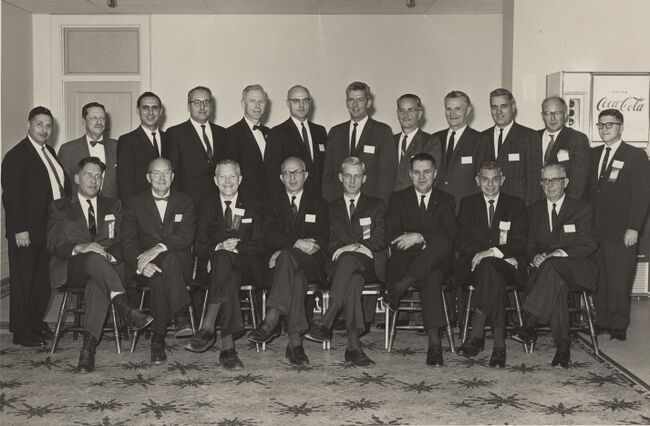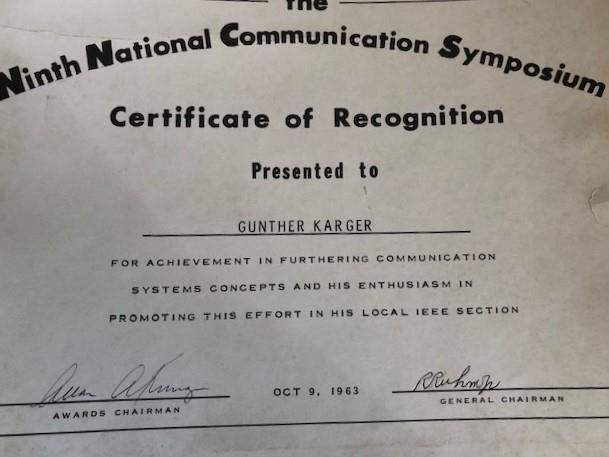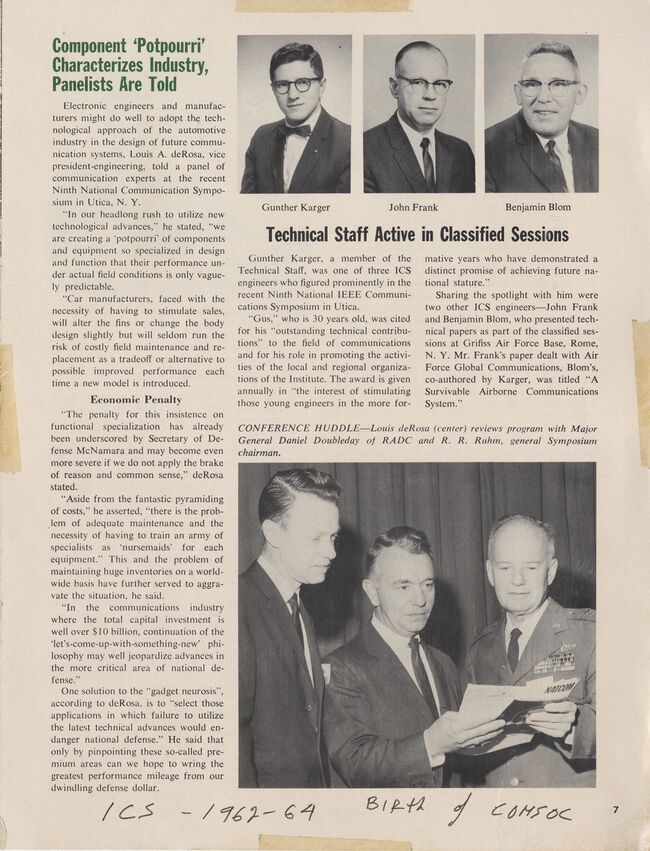First-Hand:Birth of IEEE Communications Society - COMSOC
Submitted by Gunther Karger, Homestead, Florida March 18, 2023

During the early 1960's just after the IRE-AIEE merger into IEEE, there existed the "Professional Technical Groups (PTG's). One of these was the 'Professional Technical Group on Communications(PTGC). At that time, I was personally involved with the development of satellite communications, microwave networks and defense Command control communications (C3). The key organizations involved with these were the Air Force Systems Command at Hanscom Field(Mass), Rome Air Development Center(RADC) at Rome NY, ITT Communications systems in Paramus, NJ (where I worked 1961-1964), Hazeltine in Long Island, Lenkurt Electric (Calif), Booz Allen Hamilton (VA), MITRE, Mass, ADCOM(Mass) and Army Signal Corps Labs at Ft. Monmouth, NJ. Key leaders and engineers from these and others came together at an annual conference called 'National Conference on Communications (NATCOM) usually in Utica, NY because it had a suitable conference center and was close to RADC at Rome where a few key leaders worked. I organized and participated in several of these conferences focused on airborne communications and C3.
It was October, 1963 in the depth of the Cold War when the military/Defense focus was on Post Nuclear Attack defense against first strike nuclear armed enemy ICBM’s. Then, there was the Air Force Systems Command under General Bernard Shrive with Hq in Boston(Hanscom Field and the MIT/MITRE complex and who also commanded the Rome Air Development Center at Rome, NY. This was the time and place where such things as Command Control Communications(C3) and Airborne Command Post(post nuclear attack national command center) and AWACS (Airborne Warning and Control System) were developed as was the post attack Air Force Communication System (AFSACS) which was created at ICS(ITT Communication Systems) under the personal direction of Gunther Karger, Project Manager and Technical Staff member at ICS in Paramus NJ.
The key persons involved with such matters attended this symposium held in Utica, NY including communication engineers from Ft. Monmouth, NJ (Bernard Goldberg), Dr. Elie J. Baghdady (MITRE/MIT/ADCOM, Roger McSweeney (RCA-ICS), Richard Kirby(NBS-National Bureau of Standards) , Ransom D. Slayton (Teletype Corp) , Gunther Karger (ICS) , Ralph Marks and Charlie Strom from Rome Air Development Center and others. Matters discussed included COMSEC(secure communications), emergency post attack communications, digital techniques with speech compression and networks such as Autovon and Datavon (which eventually led to the Internet.
The common denominator throughout this symposium and others by NATCOM (National Communications Symposium) was the IEEE Professional Group on Communications(PTGC) of which most of these attendees were officers and committee members. At that time, R.D. Slayton of Teletype Corp in Skokie, Ill was on the executive committee and Newsletter Editor, Gunther Karger was Chairman of the Northern New Jersey chapter and as of this meeting, became the PTGC Newsletter Editor which he served for the following five years.
At one such conference, I believe NATCOM 9, 1963, this group photo was taken including most of the key leaders in com development of the time, including myself at the far right top row. He forth in top row is Roger Mcsweeney who at the time had retired as Chief engineer at RCA Communications International and who oversaw the telephone installation in Cuba and many South American countries. We remained friends until his death. This picture may be the only one in existence showing the people who gave birth to what we have today in C3 and today's COMSOC. The 7th in top row from right is Ransom D. Slayton of the Teletype Corp, Skokie Ill whom I succeeded as National Editor of the PTGC newsletter. Next to him on the left is Emberson of the IEEE Hq.
The NATCOM symposium eventually evolved over the years into Globecom and PTGC became COMSOC. The Newsletter Gunther Karger headed eventually became the COMSOC Magazine. ISC which at that time was the project focus of the C3 developments eventually was acquired by Computer Sciences and moved to Arlington, VA . Gunther Karger however left the project to join Radiation Inc. in Melbourne, Florida later to the Air Force Space complex at Cape Canaveral and became the IEEE Chair of the Canaveral Section.
This history reflects my best recollection of that significant part of history an as of today, March, 2023, I may well be the only person alive to tell this story, just having reached my 90th birthday March 16, 2023. To preserve this and other recollections and records, I have donated all our scientific and IEEE records to the IEEE History Center.

